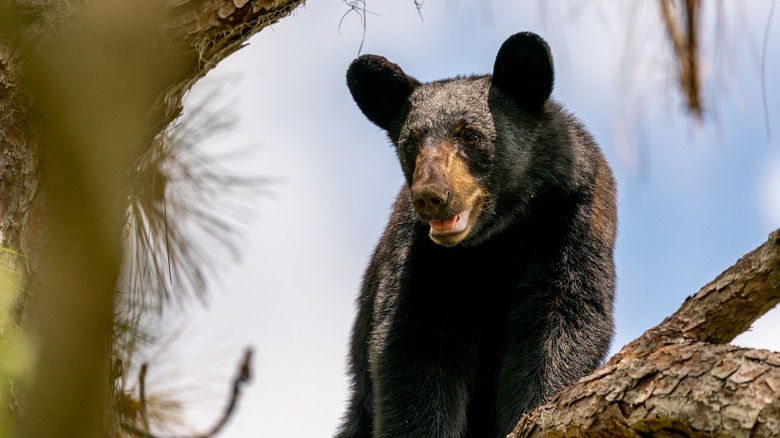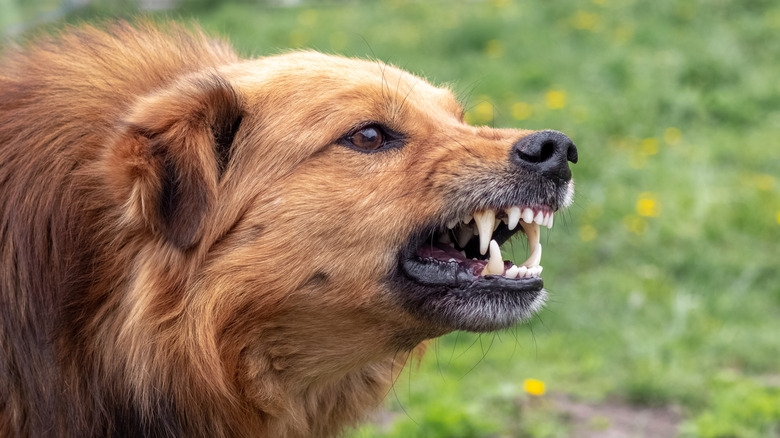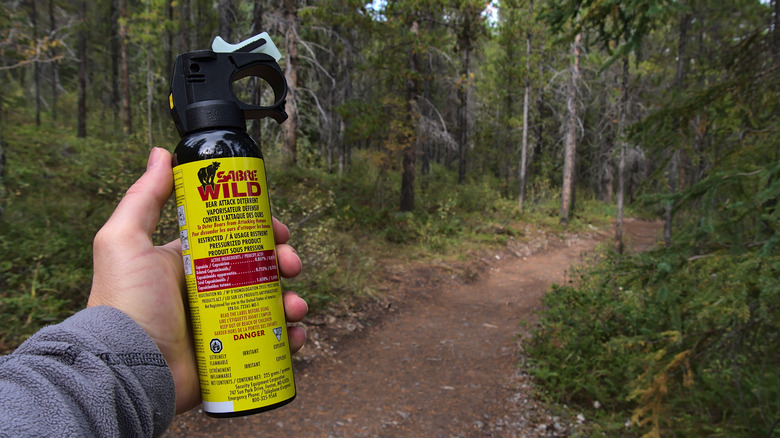Everything You Need To Know To Avoid A Deadly Encounter With Florida's Dangerous Bears
Florida is a gorgeous, sun-kissed state that — in addition to its spectacular beaches and family-friendly theme parks — is also home to a wide array of wildlife. Pelicans swoop and nest along its coastline, dolphins and sea turtles cruise through its oceans, while manatees serenely float through its crystal-clear freshwater springs — like at this river that is the #1 destination for swimming with the gentle manatees.
Of course not all of the creatures native to Florida are harmless. Around 1.3 million American alligators lurk in its vast swamps and waterways, while there is also plenty of habitat for highly venomous reptiles, such as rattlesnakes, coral snakes, copperheads, and cottonmouths (water moccasins). Bull, hammerhead, and great white sharks patrol the waters right off of the coast, and what may surprise some is that Florida also hosts a large and thriving population of black bears.
While the Florida black bear may be smaller than its northern counterpart, it can still be dangerous. It is estimated that there are over 4,000 black bears living in the state's inland wetlands and pine forests, and while the vast majority of encounters with humans result in these big critters running away, there have been instances where people have been hurt or even killed. Whatever the species, bears should always be treated with caution and respect. Here are ways you can lessen the chances of a black bear encounter going badly next time you visit the Sunshine State.
Bears: An apex predator that sometimes attacks humans
In May of 2025, an 89-year-old man was attacked and killed by a black bear near the town of Everglades City, Florida. The bear also mauled and killed his dog, though authorities believe that the encounters may have occurred separately. While extremely rare, such attacks aren't unknown, with the Florida Fish and Wildlife Commission reporting 42 such encounters since 2006, according to the New York Times.
While the 2025 attack is the first documented fatality caused by a black bear in Florida, there are enough human-bear physical encounters to cause concern. One common factor in the majority of the attacks is the presence of unleashed dogs, who — in an attempt to protect their owners (or perhaps out of hunting instinct) — bark at or even chase the bears, which can provoke the bears into retaliating, especially when it comes to a mother with cubs. Dogs tend to increase the odds of any bear encounter turning violent, so any time you're heading into bear country with a canine, it pays to carry bear spray.
How to avoid a bear attack in Florida
The best way to avoid a bad encounter with a bear in Florida is to know where they live. Bears are found throughout the state, from the Panhandle in the north, all the way through the state and into the Big Cypress National Reserve in the state's far south. While their distribution is widespread, they prefer woodlands and swamps away from populated areas, though they may come into human settlements in search of food.
If you come across a bear while enjoying Florida's great outdoors, quietly leave the area if the bear hasn't seen you — but never run, as you could trigger a predatory response. If the bear has seen you, walk backwards slowly and keep your dog close. Always remain upright, and speak to the bear in an authoritative (yet calm) voice that tells it you're in charge. Avoid eye contact and give the bear an escape route. If the bear insists on approaching you, wave your arms and make a lot of noise, which will often succeed in scaring it off.
Never try to outrun a bear (they can reach speeds of 35 mph) or try to scale a tree, as black bears are expert climbers. It's also not a good idea to play dead, and in the extremely unlikely case that a black bear does attack you, fight back, as black bears can be driven off through force. If you don't have bear spray, use rocks and sticks or anything that can be employed as a weapon to hit its eyes and face — especially its snout — which is one of the most sensitive parts of a bear's body. For more tips on dealing with dangerous creatures in the wild, here's how to survive a shark attack.


